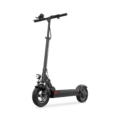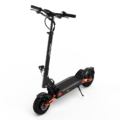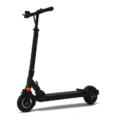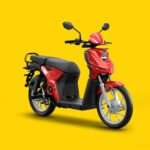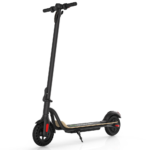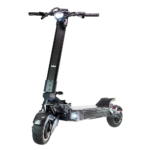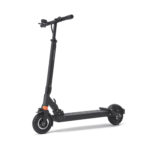- Home
- Scooters
- Electric Scooters
- JOYOR S10-S
JOYOR S10-S
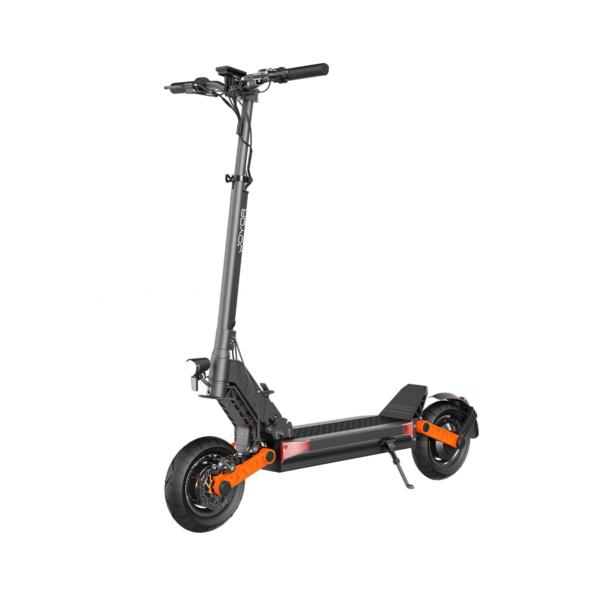


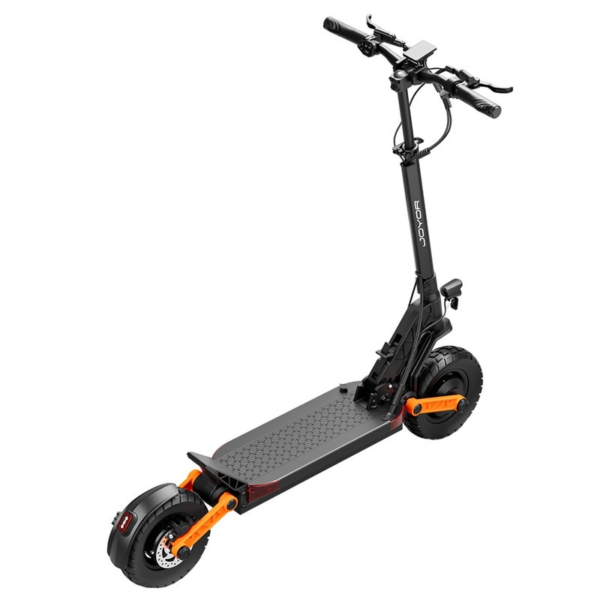
- Battery Range: 43–62 mi (70–100 km)
- Top Speed: 25–31 mph (40–50 km/h)
- Motor Power: 1000 W nominal (single)
- Weight Capacity: 265 lb (120 kg)
- Charging Time: ~8–10 h
- Scooter Weight: 59.5 lb (27.0 kg)
PROS
- Big battery for long routes
- High torque for strong hills
- Dual suspension smooths rough edges
- Dual braking confidence
- Stable at higher city speeds
CONS
- Heavier to carry upstairs
- Larger folded footprint
- Pneumatics require care
- Top speed may be legally limited
Table of contents
- What Is the JOYOR S10-S?
- How the JOYOR S10-S Works
- Key Specifications
- Design & Build Quality
- Performance Fundamentals
- Battery, Range & Efficiency
- Ride Quality & Comfort
- Braking & Safety Features
- Portability & Daily Usability
- Maintenance & Care
- Weather & Seasonal Considerations
- JOYOR S10-S vs Alternatives
- Who the JOYOR S10-S Is (and Isn’t) For
- FAQs
- Glossary
The JOYOR S10-S is a dual-motor electric scooter built for riders who want real power, steady control, and everyday practicality. It balances punchy acceleration with a planted ride, so it suits commuters who face hills, mixed pavement, and occasional rough patches. Because it folds and fits in most trunks, it also works for weekend explorers who need portability without sacrificing stability. Learn more on the JOYOR S10-S Z product page.
What Is the JOYOR S10-S?
The JOYOR S10-S sits in the “sport commuter” class. It offers more thrust and suspension travel than entry-level city scooters, yet it stops short of the ultra-heavy performance class. Therefore, it’s the kind of scooter you ride when a single-motor model feels underpowered and a 35-kilogram monster feels impractical.
At its core, the design aims for confidence. The deck is long enough for staggered feet, which spreads your weight and calms the chassis. The tall stem gives decent leverage, while the dual suspension keeps the contact patches planted over cracks and seams. Because the scooter carries real mass compared with a featherweight, it feels calm at urban speeds and less twitchy on choppy surfaces.
Even so, it remains manageable. You can fold it for elevator rides or car trunk storage, and you can carry it for short hops with a proper handhold. Although the scooter is not feather-light, the mass pays you back with stability, braking headroom, and reduced chatter through your hands.
How the JOYOR S10-S Works
Think of the scooter as a compact electric vehicle with a simple feedback loop: you ask for power with your thumb, the controller meters electricity to the motors, and the tires translate that into motion. When you squeeze the brakes, the system sheds energy through the brake rotors (and sometimes electronically), converting speed into heat safely and predictably.
Motor. Dual hub motors live inside the wheels. Because they are hubs, there are no chains or belts to tension. The motors provide strong low-speed torque, so the scooter steps off briskly from a standstill. Under moderate throttle, the power delivery feels smooth, not jerky, which helps when you are threading between pedestrians or curbs.
Controller. The controller is the scooter’s brain. It limits current to keep the motors and battery in the optimal zone, and it blends rider inputs with traction needs. In practice, you will feel this as predictable throttle ramps, selectable power modes, and optional cruise control. As a result, you can tailor the ride to your route.
Battery. A high-capacity lithium-ion pack sits in the deck. This lowers the center of gravity and stiffens the chassis. Capacity options vary by region, typically in the 52-volt class, which balances punch and efficiency. Larger watt-hour packs extend range, especially for heavier riders or hilly cities.
Throttle. A thumb throttle on the right side lets you meter power with fine control. Because your thumb rests naturally on the lever, you don’t fatigue your wrist on longer rides. Moreover, cruise control (when enabled) can hold a steady speed on open paths.
Brakes. The scooter uses dual disc brakes, often paired with electronic braking for extra drag when you roll off. Mechanical discs are common and easy to service, while hydraulic options (if present on your unit) reduce lever effort and improve modulation. Either way, you get predictable stopping and a firm bite after a short lever pull.
Key Specifications
The table below summarizes the core categories. Exact figures can differ by batch and region; always check your local unit’s label and user manual.
| Category | Details |
|---|---|
| General | Dual-motor sport commuter; sturdy folding frame; long deck; front and rear suspension; pneumatic 10-inch tires (street or mixed tread depending on batch). |
| Performance & Power | Two brushless hub motors; selectable power modes; strong low-speed torque for hill starts; steady cruising at urban speeds. |
| Battery, Charging & Electrical | 52-volt class lithium-ion pack; capacities vary by market (roughly mid-to-high Wh for its class); deck-mounted battery; standard charger included; optional faster charging depends on regional availability. |
| Build & Dimensions | Stout stem with clamp; reinforced deck; folding for transport; folded footprint is compact enough for most mid-size trunks (approximate suitcase-like length and height). |
| Safety & Control | Dual disc brakes; electronic brake assist on throttle release; bright headlight; rear light with brake activation; side reflectors; audible bell/horn. |
| Features & Extras | Cruise control (controller-based), multi-mode display, kickstand, traction-friendly deck grip, routing for cable protection, optional seat kits in some markets. |
| Warranty & Compliance | Manufacturer warranty terms vary by region and seller; CE/EN style compliance markings on most units; local speed and lighting rules apply—follow regional regulations. |
Design & Build Quality
Frame and Deck
The frame feels like a compact bridge. The deck houses the battery, which turns the floorboard into a structural beam. Because the mass rides low, the scooter tracks straight and resists side-to-side wiggle. The deck coating is grippy yet not overly abrasive, so you can reposition your feet without tearing shoe soles.
Deck length matters. With space for a staggered stance, you can plant your rear foot on the tail and your front foot near the stem. This stance spreads load and reduces steering inputs from small bumps. Consequently, the chassis remains calmer, and you can ride longer without fatigue.
Stem and Folding Hardware
The stem clamps solidly to minimize play. Properly adjusted, it resists “stem flex,” the slight fore-aft motion some folding scooters show. A well-set clamp gives you a direct steering feel, especially during braking. Because folding parts settle over the first few rides, plan to snug the hardware after your break-in period. This quick tune improves precision.
Cockpit Layout
The cockpit is simple. You get a clear display with speed, mode, and battery bars, plus a thumb throttle on the right and brake levers on both sides. The control layout allows you to feather the throttle while covering the brakes, which is the safest way to ride in traffic. Furthermore, cable routing stays tucked along the stem to reduce snags.
Fit and Finish
Bolts sit flush, the paint resists small scuffs, and the plastic parts feel dense rather than brittle. Because it’s a dual-motor scooter, the harness carries higher current than entry-level units. You’ll see thicker wiring and more robust connectors. This helps reliability when the weather gets cold or when vibration increases on rough patches.
Performance Fundamentals
Acceleration Feel
Off the line, the scooter pulls with intent. It doesn’t leap uncontrollably, yet it wastes no time reaching a comfortable cruise. In ECO or lower modes, the throttle has a gentle ramp that suits crowded streets. In stronger modes, you feel more snap, which helps when merging or climbing a short ramp out of an underpass.
Because power arrives from both wheels, the scooter keeps traction on imperfect surfaces. Even on dusty bike lanes, you can roll on without wheelspin when you keep your body weight centered. If you do feel a chirp, easing the thumb for a heartbeat restores grip.
Cruising Stability
At neighborhood speeds, the chassis feels planted. The wheelbase and deck length keep small steering corrections from turning into wobbles. Moreover, the suspension takes the edge off expansion joints, so the bars stay calm in your hands. As speed rises, your stance matters more. With your back foot bracing the deck and your arms soft, the scooter tracks like a short wheelbase bicycle.
Hill-Climb Behavior
On 7–10% grades, the JOYOR S10-S continues to make progress without drama. Dual motors share the load, so the scooter avoids bogging down halfway up a hill. On longer climbs, you’ll notice voltage sag near the end of the battery, which is normal for lithium-ion packs. Therefore, if hills dominate your loop, choose a higher assist mode earlier and maintain steady speed rather than repeatedly sprinting.
Battery, Range & Efficiency
Rated vs. Real-World Range
Printed range figures assume ideal test loops and moderate rider weight. Real rides are messier. Wind, hills, starts and stops, and cold weather trim miles. Heavier riders also tax the pack. In mixed city riding with frequent braking, expect less range than a flat path cruise at steady speed. Conversely, steady 20–25 km/h-equivalent cruising on smooth routes often yields the best efficiency.
The S10-S battery options span the mid-to-high capacity bracket for its class. A larger watt-hour pack obviously goes farther. However, the dual-motor layout also invites brisk riding, which eats energy. As a result, your right thumb is the single biggest variable.
Efficiency Tips
First, pick a mode that matches your route. Lower modes cut peak current and waste less during starts. Next, keep tires at proper pressure. Soft tires feel comfy but burn watt-hours as heat. Then, ride smoothly. Fewer hard launches and fewer late-brake events save energy. Finally, avoid deep discharges. Lithium-ion packs last longer when you cycle them between roughly 20% and 85% day to day.
Charging Best Practices
Let the pack rest a few minutes after a hot ride before charging. This protects cell chemistry. During long storage, leave the scooter around half charge and top off monthly. Additionally, keep the charging port cap clean and seated, especially after wet rides. If your charger or wall outlet warms excessively, stop and investigate before resuming.
Ride Quality & Comfort
Tires and Pressure
Pneumatic 10-inch tires deliver the comfort and grip that solid tires can’t match on this chassis. On clean pavement, street tread rolls quietly. On mixed paths with dust or brick seams, a slightly more open tread adds bite. Because tire pressure shapes both comfort and control, check it weekly. Too low invites pinch flats and vague steering; too high amplifies chatter.
Suspension Behavior
Front and rear suspension reduce the shock of potholes and curb cuts. With reasonable pressure in the tires, the scooter floats over typical city scars without harsh kicks. Still, suspension isn’t a magic carpet. You’ll feel the frame settle after bigger hits, so keep knees bent and arms loose. The design aims for balance: enough travel to tame roughness, but not so soft that the chassis wallows in fast sweepers.
Ergonomics and Stem Flex
The deck height lets you keep hips above the axle line, which improves control. Handlebars sit at a practical reach for average-height riders. Moreover, the stem resists flex when properly clamped, so the steering response remains direct during hard braking. If you do sense a hint of fore-aft play after your first week, re-tension the latch per the manual. This small step pays back with crisp feel.
Braking & Safety Features
Brake System
Dual disc brakes provide the main stopping force. Mechanical systems offer straightforward upkeep with pad adjustments at the caliper and barrel. If your unit includes hydraulic calipers, lever effort drops while modulation improves. Either layout benefits from a light squeeze early, then firmer pressure as the weight shifts forward. Consequently, you avoid lockup and stop shorter.
Electronic braking may assist as you roll off the throttle. This “regen” effect adds drag and saves a bit of pad wear. It also stabilizes the chassis on long descents when you want to keep speed in check without heating rotors excessively.
Lighting and Visibility
A bright headlight mounts high enough to project forward rather than simply lighting the front tire. The tail light brightens under braking. Side reflectors add cross-traffic visibility. Because lights are vital, test them before every night ride. Additionally, consider a reflective strap on your backpack to raise your profile in mixed traffic.
Wet-Weather Notes and IP Considerations
Treat the scooter as splash-resistant, not waterproof. Light rain and wet pavement are manageable with conservative speed and smooth inputs. However, deep puddles and submersion risk damage to bearings, connectors, and the controller. After wet rides, wipe the deck and dry the brake rotors to prevent surface rust.
Portability & Daily Usability
Weight and Carrying
The scooter has real heft, which helps stability but challenges long carries. For stairs, use the stem as a balance point and the deck as a counterweight. Because the center of gravity sits low, one-handed carries are short-duration tasks rather than routines. Plan routes with elevators when possible.
Fold Mechanism
Folding is straightforward once you learn the sequence. First, stabilize the bars with your hips. Then, release the latch and guide the stem down without slamming it. A good fold centers the weight, so the scooter stays compact rather than splaying the front wheel. After unfolding, re-secure the clamp fully. You’ll feel the hinge settle as new parts bed in; a quick re-check of tightness keeps the ride solid.
Storage and Security
Indoors is best. Temperature swings shorten pack life, and theft risk drops to near zero in a locked space. If you must park outside briefly, lock through the frame and a wheel with a quality U-lock or properly rated chain. Remove accessories, and avoid leaving the scooter in direct sun for hours, which heats the battery and ages rubber.
Maintenance & Care
Simple Upkeep Schedule
- Before each ride: Check tire pressure, test both brakes, and confirm lights work. Spin wheels for rub and listen for grinding.
- Weekly: Wipe the deck and stem, inspect the folding latch, and tighten any bolts that have settled. Lightly lube brake levers and pivot points as needed.
- Monthly: Inspect brake pads and rotors, true minor rotor rubs, and re-tension the stem clamp. Check for frayed cables or crushed housing.
- Quarterly: Deep-clean connectors and contact points; remove the deck plate to inspect the battery compartment for moisture or debris; re-torque major fasteners to manufacturer specs.
- Seasonally: Replace worn tires, refresh grip tape if slick, and evaluate the battery’s holding capacity. If range has dropped significantly, consider a professional pack check.
Tire Care
Keep valves capped, and use a gauge you trust. Because small-diameter tires are sensitive, a few PSI makes a clear difference. If punctures worry you, quality liners or sealant can reduce downtime, but follow product directions and re-balance the wheel if needed.
Brake Adjustment
Pad wear reduces bite and increases lever travel. Adjust caliper position so pads sit evenly on the rotor and do not drag. If you feel pulsation, check rotor true and mounting bolts. For hydraulic systems, look for oil weep at banjo fittings and lever seals; address leaks immediately.
Firmware and App Habits
If your unit supports configuration via display codes or an app, avoid extreme settings. Overly aggressive acceleration or braking profiles can stress components. Instead, tune gradually and test in a safe area.
Weather & Seasonal Considerations
Rain
Wet pavement shrinks your traction budget. Therefore, slow earlier, brake straighter, and avoid painted lines. Water on rotors also lengthens the first lever pull; lightly scrub the brakes to dry them before steep descents. After the ride, towel the scooter, cycle the brakes a few times, and leave it to dry away from heaters.
Heat
High temperatures thin grease and elevate battery temperatures. Park in the shade and avoid charging immediately after a hard ride. During heat waves, expect slightly reduced range and softer tire feel as pressure rises. Check PSI when tires are cool.
Cold
Cold batteries deliver less energy and sag earlier. You may notice reduced acceleration near the end of the pack on frigid days. Warm the scooter indoors before charging, and consider a lower cruising speed to preserve range. Because rubber hardens, give yourself extra stopping distance and steer gently.
JOYOR S10-S vs Alternatives
Against City Commuters
Compared with basic city commuters, the JOYOR S10-S offers stronger hill performance, better suspension, and more confident braking. If your route includes climbs, rough brick, or long bridges with gusty crosswinds, the extra mass and dual motors pay off. However, pure city commuters weigh less and carry easier up multiple flights of stairs.
Against Performance Bruisers
Against ultra-heavy performance scooters, the S10-S is easier to live with daily. It folds, fits in more trunks, and doesn’t require a gym membership to lift. Nevertheless, the biggest machines stop shorter from very high speed and crush steep hills without slowing. If you crave extended high-speed blasts on open paths, a larger platform may fit better.
Against Off-Road-Leaning Models
Knobbier, longer-travel scooters soak up roots and ruts beyond city limits. Still, they often compromise on weight and urban agility. The JOYOR S10-S strikes a middle ground: it tolerates gravel connectors and patchy asphalt, yet it stays friendly for downtown rides.
Bottom line: Pick the S10-S when you want a strong, stable, foldable scooter that handles real-world streets year-round. Choose lighter if your day involves lots of stairs. Choose heavier if you prioritize top-end speed and maximum range above all else.
Who the JOYOR S10-S Is (and Isn’t) For
Ideal for:
- Daily commuters who face mixed surfaces, moderate hills, and stop-and-go traffic.
- Students crossing campus zones with uneven paths who still need to stash a scooter under a desk.
- Last-mile riders who want more security, braking, and stability than an entry-level model provides.
- Multi-modal travelers who combine scooter, train, and rideshare and need a foldable vehicle with decent range.
Not ideal for:
- Walk-up apartment residents who carry a scooter several flights daily.
- Speed chasers who want sustained very high speeds on open roads.
- Minimalists who prefer the lightest possible scooter regardless of comfort or braking margin.
FAQs
1) Is the JOYOR S10-S good for hills?
Yes. Dual hub motors provide the torque to climb common urban grades. On 7–10% hills, it continues at a steady pace when you keep your weight centered and your throttle smooth.
2) How far can it go on a charge?
Range depends on battery option, rider weight, temperature, and speed. Smooth riding at moderate speed, proper tire pressure, and avoiding deep discharges extend your miles.
3) Does it have cruise control?
Most units include controller-based cruise control. After holding a steady speed for a few seconds, the system can maintain it until you brake or tap the throttle.
4) What maintenance does it need?
Check tire pressure and brakes weekly, tighten the folding latch after break-in, and inspect pads and rotors monthly. Seasonally, refresh tires and evaluate battery health.
5) Can I ride it in the rain?
Treat it as splash-resistant, not waterproof. Light rain is manageable with slower speeds and smooth braking. Avoid deep puddles and dry the scooter after wet rides.
6) Where can I get a quick JOYOR S10-S overview?
Right here. This guide distills the design, ride feel, range factors, braking, upkeep, and ideal use cases into a concise JOYOR S10-S overview.
7) How does it compare to bigger performance scooters?
It’s more portable and easier to store, while still providing strong acceleration and capable brakes. However, the heaviest performance machines deliver more top-end power and longer range.
Glossary
- Ah (amp-hours): A measure of battery capacity. Higher Ah usually means more stored energy in the same voltage class.
- Wh (watt-hours): Total energy (voltage × amp-hours). It translates most directly to potential range.
- Controller: The electronic brain that regulates current flow to the motors; it shapes throttle feel and power modes.
- Regen (regenerative braking): Electronic drag that converts a bit of motion back into electrical energy during deceleration.
- Stem flex: Fore-aft motion felt at the handlebars under load. Proper clamping and hardware care minimize it.
- IP rating: Ingress protection code describing resistance to dust and water. Treat most scooters as splash-resistant rather than waterproof.
- Torque: Rotational force that determines how quickly a scooter can start and climb.
- Modulation (brakes): How precisely you can control braking force from light to hard squeeze.
- Voltage sag: Temporary drop in voltage under heavy load or low temperature; normal behavior for lithium-ion packs.
- Pneumatic tire: Air-filled tire that absorbs shocks and provides grip; requires proper pressure.
- Square-wave / sine-wave controller: Different drive strategies; smoother controllers often feel quieter and more refined at low speed.
- Wheelbase: Distance between wheel centers. Longer wheelbases tend to improve straight-line stability.
- Deck stance: The position of your feet on the deck; a staggered stance improves control and comfort.
- Current limit: The maximum electrical current the controller allows; it shapes acceleration and peak power.
- Pad wear indicator: Visual cue on brake pads showing when replacement is due.
Specifications
General
| Model The Model specifies the exact version or name of the scooter. It helps identify its unique design, features, and specifications within the manufacturer’s product line. Knowing the model makes it easier to compare options, find compatible accessories, or look up support information. | S10-S |
| Brand The Brand identifies the manufacturer or company that designs and produces the scooter. A trusted brand is a sign of quality, reliability, and good customer support. Well-known brands often have higher standards for safety, performance, and after-sales service, giving you more confidence in your purchase. | JOYOR |
| Release Date The Release Date indicates when the scooter model was officially launched on the market. This helps you know how current the design, technology, and features are. A newer release date often means updated components, improved performance, and the latest safety or smart features. | 17 November 2025 |
| Recommended Age Recommended Age indicates the minimum age range that the scooter is designed for, based on safety, size, and ease of use. Following the recommended age helps ensure that riders can handle the scooter’s speed, weight, and controls comfortably and safely. Always check local laws and use protective gear, especially for younger riders. | Recommended 16+ |
Performance & Power
| Motor Power (Wattage) What it means: The motor power, measured in watts (W), shows how strong the scooter’s electric motor is. Why it matters: Higher wattage usually means better acceleration, more torque, and improved performance on hills or rough terrain. For example, a 250W motor is good for flat city roads and light riders, while a 500W or 1000W motor provides more power for faster speeds or climbing steep inclines. | 1000 W nominal (variant-dependent) |
| Top Speed The Top Speed indicates the maximum speed that the scooter can reach under optimal conditions. It’s usually measured on level ground with a fully charged battery and an average rider weight. A higher top speed allows you to travel longer distances faster, but always ensure you ride within legal speed limits and your personal comfort zone for safety. | 40–50 km/h (region) |
| Battery Capacity Battery Capacity refers to the total amount of energy the scooter’s battery can store, usually measured in ampere-hours (Ah) or watt-hours (Wh). A higher battery capacity means you can ride longer distances on a single charge, reducing the need for frequent recharging. Keep in mind that actual range can vary depending on rider weight, terrain, speed, and weather conditions. | 52–60 V 18–26 Ah |
| Estimated Range per Charge The Estimated Range per Charge indicates the average distance the scooter can travel on a single full battery charge. This range is calculated under optimal conditions, such as flat terrain, moderate speed, and average rider weight. Real-world range may vary depending on riding style, terrain, weather, and load. A longer range means fewer recharges and greater freedom for longer trips. | 70–100 km |
| Hill Climb Ability Hill Climb Ability describes the maximum incline or slope that the scooter can handle while maintaining stable performance. It’s typically expressed as a percentage or in degrees. A higher hill climb rating means the scooter can tackle steeper hills without losing too much speed or power. Actual climbing performance may vary based on rider weight, battery charge, and terrain conditions. | Up to 25° grades |
| Drive System The Drive System refers to how power from the motor is delivered to the wheels. Electric scooters typically use either a hub motor (directly integrated into the wheel) or a chain/belt drive system. A high-quality drive system ensures smooth acceleration, efficient power transfer, and low maintenance. The choice of drive system affects performance, noise level, and overall ride experience. | Rear hub or dual motors by variant |
Charging & Electrical
| Charging Time Charging Time indicates how long it takes to fully recharge the scooter’s battery from empty to 100% using the standard charger provided. Faster charging means less downtime and more time on the road. Actual charging time may vary slightly depending on battery capacity, charger output, and environmental conditions. | Approx. 8–10 hours |
| Battery Type Battery Type refers to the specific technology used in the scooter’s battery, which affects performance, lifespan, weight, and charging time. Most modern electric scooters use high-quality lithium-ion (Li-ion) batteries because they offer a good balance of energy density, durability, and low maintenance. A reliable battery type ensures consistent power delivery and longer riding ranges. | Li-ion with Smart BMS |
| Removable Battery A Removable Battery means the battery pack can be easily detached from the scooter for convenient charging and replacement. This feature allows you to charge the battery separately, swap it with a spare for extended range, or securely store it indoors in extreme weather. Removable batteries add flexibility and make it easier to keep your scooter powered up wherever you are. | Optional faster charger (variant) |
| Regenerative Braking Regenerative Braking is an energy-saving feature that converts some of the energy normally lost during braking back into battery power. When you slow down or brake, the motor works in reverse to generate electricity, which helps extend the scooter’s range and improves overall efficiency. This system also reduces wear on traditional brake components, leading to lower maintenance over time. | Dual discs + e-assist |
| Lighting Lighting refers to the built-in front and rear lights that enhance visibility and safety when riding in low-light conditions or at night. Good lighting helps you see the road ahead and ensures that other road users can see you. Many scooters include LED headlights, taillights, and sometimes brake lights or side reflectors for added safety and compliance with local traffic regulations. | Headlight + tail/brake + reflectors |
Build & Dimensions
| Scooter Weight Scooter Weight refers to the total weight of the scooter when fully assembled, including the battery. This affects how easy it is to carry, lift, and store the scooter when not in use. A lighter scooter is more portable and convenient for commuting, especially if you need to carry it upstairs or onto public transport. Keep in mind that a sturdy frame and quality components may add to the weight but also contribute to better durability and ride stability. | 59.5 lb (27.0 kg) |
| Maximum Rider Weight Maximum Rider Weight indicates the highest rider weight that the scooter is designed to safely support while maintaining optimal performance and stability. Staying within this limit helps ensure reliable acceleration, braking, and climbing ability, and it protects the frame, suspension, and motor from excessive strain. Exceeding the recommended limit may reduce performance and increase wear on components. | 265 lb (120 kg) |
| Deck Size Deck Size refers to the dimensions of the scooter’s standing platform. A wider and longer deck provides more foot space, allowing you to stand comfortably and adjust your stance while riding. A well-sized deck improves balance and stability, especially on longer rides or at higher speeds. Compact decks, on the other hand, help keep the scooter lightweight and portable. | Wide deck; long wheelbase |
| Handlebar Height Handlebar Height refers to the distance from the deck to the handlebars, which affects your riding posture and comfort. An appropriate handlebar height helps you maintain good balance, reduces strain on your back and arms, and makes steering more comfortable. Some scooters have adjustable handlebars to fit riders of different heights, while others have a fixed height for a streamlined design. | Adult fixed bar height |
| Folding Mechanism The Folding Mechanism describes how easily and securely the scooter can be folded for carrying and storage. A well-designed folding system lets you quickly collapse the scooter into a compact size, making it convenient to transport on public transit, store under a desk, or fit into a car trunk. Look for sturdy latches and safety locks to ensure the scooter stays firmly in place when folded or unfolded. | Reinforced folding latch |
| Dimensions Folded Dimensions indicate the size of the scooter when it’s fully folded. This measurement shows how much space the scooter will take up when stored or carried, making it easier to check if it will fit in your car trunk, under a desk, or in a closet. Compact folded dimensions are ideal for commuters who need to bring their scooter on public transport or store it in tight spaces. | 48.4 × 21.3 × 22.4 in (folded) |
| Material Material refers to the primary construction materials used for the scooter’s frame and key components. High-quality materials like aircraft-grade aluminum, reinforced steel, or durable composites provide strength, stability, and a lighter overall weight. A sturdy material ensures the scooter can handle daily wear and tear while maintaining safety and performance. | Aluminum steel-reinforced |
Safety & Control
| Brake Type(s) Brake Type(s) describe the braking systems the scooter uses to help you slow down or stop safely. Common brake types include mechanical brakes (like drum or disc brakes), electronic brakes, and foot brakes. Many scooters combine multiple braking systems for added safety and shorter stopping distances. The type and quality of brakes affect your control, especially when riding at higher speeds or on slopes. | Front & rear mechanical discs + e-assist |
| Suspension Suspension refers to the system that absorbs shocks and vibrations while riding, providing a smoother and more comfortable ride over uneven or rough surfaces. Scooters may have front suspension, rear suspension, or dual suspension for better shock absorption and stability. Good suspension helps reduce rider fatigue and improves control, especially when riding on bumpy roads or off-road paths. | Front fork + rear spring |
| Tire Type Tire Type refers to the kind of tires the scooter uses, which directly affects ride comfort, traction, and maintenance. Common types include solid (airless) tires, pneumatic (air-filled) tires, or hybrid options. Pneumatic tires offer better shock absorption and a smoother ride on rough surfaces, while solid tires are puncture-proof and require less upkeep. The right tire type helps ensure safe handling and a comfortable ride in different conditions. | Pneumatic street/off-road mix |
| Tire Size Tire Size indicates the diameter and width of the scooter’s tires, which affect ride comfort, stability, and how well the scooter handles different terrains. Larger tires generally offer better shock absorption and a smoother ride over bumps and rough surfaces, while smaller tires keep the scooter lighter and more portable. Choosing the right tire size helps ensure a balance between agility and comfort. | 10-inch |
| Kickstand The Kickstand is a built-in stand that allows you to park your scooter upright when it’s not in use. A sturdy kickstand keeps the scooter stable and prevents it from tipping over, protecting it from scratches and damage. It also makes storing and accessing your scooter more convenient, whether you’re at home, work, or on the go. | Side kickstand |
| Water Resistance Rating Water Resistance Rating indicates how well the scooter is protected against water and moisture, usually shown as an IP (Ingress Protection) rating. This rating helps you understand whether the scooter can handle light rain, splashes, or wet roads without damage. While most scooters are not fully waterproof, a good water resistance rating adds peace of mind when riding in changing weather conditions. Always avoid deep puddles or submerging the scooter to protect its electrical components. | IPX4 body |
Features & Extras
| Display/Console The Display (or Console) shows important real-time information about your ride, helping you monitor your scooter’s status at a glance. Typical displays show speed, battery level, distance traveled, and riding mode. Some models also include additional features like Bluetooth connectivity, app integration, or backlighting for better visibility at night. A clear and easy-to-read display enhances safety and convenience on every trip. | LCD dashboard |
| Ride Modes Ride Modes refer to the different speed and power settings you can choose to match your riding style or road conditions. Common modes include eco for maximum range and energy efficiency, standard for everyday balance, and sport or turbo for higher speed and stronger acceleration. Switching between ride modes allows you to customize performance, conserve battery, and ride safely in various environments. | Eco, Drive, Sport |
| Smart App Connectivity Smart App Connectivity lets you pair your scooter with a dedicated mobile app via Bluetooth. Using the app, you can monitor real-time ride stats like speed, battery level, and range, adjust settings such as ride modes or cruise control, lock the scooter for added security, and sometimes receive firmware updates. This feature adds convenience and allows you to personalize your riding experience right from your smartphone. | Bluetooth app connectivity |
| Anti-Theft System The Anti-Theft System helps protect your scooter from unauthorized use or theft. This feature can include built-in alarms, electronic motor locks, GPS tracking, or remote locking through a mobile app. A good anti-theft system provides peace of mind when parking your scooter in public spaces, adding an extra layer of security to safeguard your investment. | App lock |
| Cruise Control Cruise Control allows you to maintain a steady speed without continuously holding the throttle. This feature makes longer rides more comfortable by reducing hand fatigue and providing a smoother, more relaxed riding experience — especially on flat, open roads or bike lanes. For safety, cruise control can usually be easily activated or deactivated while riding. | Yes (cruise control) |
| Accessories Included Accessories Included lists the additional items that come with the scooter to enhance your riding experience and convenience. Common accessories may include a charger, kickstand, bell, lights, phone holder, or carrying strap. These extras add value by making your scooter safer, easier to use, and ready to ride straight out of the box. | Bell, reflectors, charger |
Warranty & Compliance
| Warranty Period The Warranty Period indicates how long the manufacturer guarantees the scooter against defects in materials and workmanship under normal use. A good warranty provides peace of mind, showing the brand’s confidence in its product quality. Always check what parts are covered, such as the frame, battery, and motor, and follow the maintenance guidelines to keep your warranty valid. | 12–24 months typical |
| Certifications Certifications confirm that the scooter meets specific safety, quality, and environmental standards set by recognized organizations or regulatory bodies. Common certifications may include CE, RoHS, UL, or other local compliance marks, depending on your region. These certifications ensure that the scooter is manufactured to high standards and is safe and legal to use in your country. | Local micromobility compliance |


